|
When parents encourage their children to take music lessons from a young age, the piano is one of the most popular instrument choices. There is no definitive age at which experts suggest children begin music lessons; young musicians only need to be large enough to reach the keys and have enough hand dexterity to manipulate them. If you are a parent who is thinking about introducing your young child to music through piano lessons for the first time, there are certain things you will need to do in order to prepare your child and your home for the experience before the first class. Listed below are six things to do before your child attends his or her first piano lesson. 1. Invest in a piano for your home.The first step that you can take to benefit your future music student is to purchase a piano for him or her to use. Ideally, this should be done months or years ahead of time so that your child can grow up around the instrument and develop a familiarity with it prior to learning to play. At the very least, make sure to invest in a piano right before he or she begins lessons. While there are ways to obtain free access to a piano outside of the home, nothing will be as accessible or as beneficial to your child’s learning experience as having a piano to practice on in his or her immediate environment. While a new piano can be a significant investment, there are many websites where you can find gently-used pianos for affordable prices. Once you’ve found a piano that suits your budget, make sure to get it tuned by a professional so that the notes your child plays as he or she learns are in key. 2. Create the ideal practice space around the piano.Where you place the piano in your home will affect how your young music student feels about the act of practicing. Professionals in music education suggest situating your piano in an area of the home that is neither too isolated nor too close to distractions like a television or computer. The area should be warm and welcoming with adequate lighting. It must also include all the equipment that your child will need for practice sessions, including music sheets, pencils, and a comfortable piano bench. The more positive the physical practice area is, the more likely your child will feel enthusiastic about practicing when the time comes. 3. Listen to music together.Spending quality time listening to music with your child can help him or her to develop a positive relationship with it as they grow up. While they listen, try to introduce them to basic musical concepts like rhythm by having them clap along to the beat of a song with you. It can also be helpful to look up exciting videos of piano performances on YouTube, such as those made by the Piano Guys, to give your child a visual of what it’s like to play the instrument. Having this kind of familiarity may help children feel more comfortable with the instrument when they begin their first lessons. 4. Help your child learn the ABCs. If your child understands the alphabet by the time that he or she takes up piano lessons, that ability will help them to identify and understand the names of notes. The musical alphabet spans notes with names from A to G, and a child who can remember the order and recognize letters when written on a music sheet will be in a better position to learn. It can also be helpful to teach your child how to distinguish between his or her right and left sides as way to improve his or her ability to interact with a piano’s keyboard. Helping your child become aware that he or she can mirror the action of one hand on a side of their body with the other will facilitate the development of better spatial awareness. Additionally, it will help him or her better understand directions given during lessons. 5. Have a discussion about lessons and expectations.While your child may be excited about the prospect of learning to play the piano, it’s important that you as the parent communicate your expectations for him or her at the outset. Make sure that your child knows that learning an instrument will be a fun experience, but that it requires practice and dedication. Talk to your child about the importance of daily practice, and make a verbal agreement on how often, when, and for what minimum amount of time your child will dedicate him- or herself to the practice of the piano each day. 6. Have a meet-and-greet with the instructor.When choosing a music instructor for your child, try to schedule a meeting with prospective teachers before you make a decision. Once you find the right instructor, make sure to discuss the goals that you would like your child to accomplish through lessons and get feedback on the best ways that you can foster your child’s musical development at home.
The guitar has captured the interest of both young aspiring musicians and older learners alike since it first gained popularity in its electric form during the mid-20th century. Arguably one of the most popular instruments in the world, some people choose to take up the guitar as a form of relaxation or creative expression, while others choose it because it allows them to entertain both solo and with other musicians. Still another reason that people choose to play the guitar over other instruments is because the guitar allows musicians the freedom to play and sing at the same time. There are few better instruments to learn to play for a musician who wants to sing along to music, but doing both at the same time can be difficult for beginners. Listed below are seven useful tips that can help new learners develop the ability to play the guitar and sing along. 1. Focus on your guitar-playing first. Before you attempt to play and sing at the same time, you must first focus on developing the ability to play basic chords. As a new guitarist, your ability to recall the fingering for standard chord structures without much thought and to change quickly between these chords are the first steps in singing along to a song on the guitar. 2. Work with a metronome.Keeping rhythm while performing a song is crucial to sounding natural—and it also makes singing along to the guitar easier. One way that guitarists can work on this form of timing during a song is to strum an easy pattern along to a metronome for about 10 minutes each day. If you’re committed to this practice, you’ll see a gradual improvement in your ability to play a song on beat over time—sometimes in as little as a few weeks. 3. Start simple. If you’re just starting out, don’t choose a song that requires you to play advanced chords or sing complicated lyrics. Instead, you should look for songs with simpler chords and a basic rhythm that is well-suited to the beginning learner. Of course, you can develop the ability to sing and play any song with enough dedication and practice, but choosing a song that is overly complicated from the start can lead to frustration, which may take the enjoyment out of the experience. 4. Memorize the music and lyrics separately.You should know the chords and the chord changes by heart before you sit down to sing along to a song. You can gauge your familiarity with a song by how well you’re able to play the chords while you’re distracted, such as when you’re carrying on a conversation or watching a TV show. Likewise, you should be able to sing the lyrics and the tune of the song from memory. The more that both elements of a song are second nature to you, the easier it will be to combine them. 5. Take it slow.The excitement of learning to sing and play at the same time can cause some beginners to try and perform the song as quickly as possible at the start, but this actually does more harm than good. Start out slowly, learning to play and sing the correct parts one measure and lyric at a time—performing with speed will naturally come with time. People who rush through chords, rhythms, and lyrics to try and learn extremely quickly risk developing bad habits that can be difficult to break. It may even be a good idea to start out humming the song along with the chords instead of attempting to sing right away. Humming can help you figure out where the chord changes are in a song, since they don’t always line up with the syllables of the lyrics. 6. Change the key if you need to.Though you can learn how to play a song in its original form, the notes may not suit the range of your voice. In this case, it’s important to remember that you can always change the key of the song to suit your range. This can be done by transposing the chord structure to a higher or lower octave using a transposition chart. Alternatively, you can use a capo, which allows you to play the original chords further up the neck of the guitar while changing the vocal register. Both ways of altering a song’s key have their advantages, so choose the method that you are most comfortable with on a case-by-case basis. 7. Put in a lot of practice. As with any musical goal, learning how to sing and play the guitar simultaneously requires practice and patience. Don’t expect to be able to accomplish this feat right away, and try not to feel discouraged if you can’t master this new ability as quickly as you had hoped. It’s important to avoid rushing the process. In addition, recognize that even the most talented guitar-playing singers did not develop their abilities immediately. As a beginner, you should consider this goal a long-term project, and remember to take pride in your accomplishments when you master a song.
Research proves the incredible effects that music education can have on the minds of children. Apart from aiding skill development in areas like language, test-taking, and spatial intelligence, learning music can also help children develop socially and emotionally, and allow them to explore their creativity in a way that is both fun and cathartic. Today, it seems more imperative than ever for all children to have access to an education in music, but not all parents or schools can afford to connect kids to these programs. To help promote music education, consider donating to nonprofits and foundations dedicated to this cause. The following organizations are some of the most visible in this field, but many other groups exist as well. VH1 Save the Music FoundationEstablished in 1997 by the eponymous music television network, the VH1 Save the Music Foundation has since raised $50 million to buy new instruments for music programs at over 2,000 public schools. Altogether, this work has directly impacted the lives of roughly 2 million American children. The foundation believes that music is a key part of kids’ healthy development, and suggests that lessons in the subject can boost children’s interest in attending school, promote valuable life skills, and help kids grow into well-rounded adults. The group’s ultimate goal is to make sure every child in the United States has the ability to play an instrument if they want to. VH1 Save the Music Foundation encourages people to support its work by donating directly to the cause or by hosting a fundraiser on the organization’s behalf. Details about hosting or giving to a fundraiser can be found here. Fender Music FoundationAnother nonprofit sponsored by a major music industry corporation, the Fender Music Foundation is a charitable organization established by musical instrument maker Fender in 2005. This grantmaking organization guarantees that 100 percent of all donations from supporters go directly to paying for instruments used in music classrooms around the country. To date, the foundation has helped more than 187,000 students by donating a wide range of instruments, including guitars, drums, keyboards, brass instruments, pianos, woodwind instruments, amps, and recorders. Supporters can donate funds and, in some circumstances, instruments to the organization. Monetary donations can be made online via the Fender Music Foundation website. Donors who give $30 or more receive a collectable metal keychain in the shape of a pick or a Stratocaster guitar. National Association of Music Merchants Foundation (NAMM Foundation) The NAMM Foundation is the philanthropic arm of the National Association of Music Merchants, which brings together professionals from the music, sound, and event technology industries around the world. The foundation was created in 2006 with a three-part mission: to advocate for music education, to fund and promote research on the effects of music, and to make music instruction accessible to people of all ages and backgrounds, including veterans and the elderly. The NAMM Foundation awards grants to a wide range of music-based organizations in need of support every year, and partners with groups such as The Kennedy Center, Americans for the Arts, the Music Achievement Council, and the aforementioned VH1 Save the Music Foundation. The group’s online donation portal can be found here. The Roots of MusicA regional nonprofit focused specifically on the needs of students in New Orleans, Louisiana, The Roots of Music promotes the idea that music education can make a significant difference in the life of a child. Through the organization, kids between the ages of nine and 14 from disadvantaged backgrounds in New Orleans gain access to education in music history, theory, and instrumentation. Lessons provided by the group have a special focus on New Orleans’ rich musical heritage and its history as the birthplace of jazz. The most unique aspect of The Roots of Music, however, is that the group goes beyond music lessons to also provide participants with hot meals and transportation to and from classes—two things that could otherwise bar some children from participating in a music education program. To help the work of The Roots of Music, supporters can donate, check the website for volunteer opportunities, or attend charitable events throughout the year that benefit the organization. Little Kids RockLittle Kids Rock was formed by elementary school educator David Wish in 1996 as a response to a severe lack of funding for music education at the school where he worked. It began with Wish offering free after-school guitar lessons to students and has since evolved into a nationwide organization that provides 650,000 students from underserved communities with access to instruments and modern band classes. The nonprofit accomplishes this primarily through financial support for schools that have seen their music programs shut down and by training volunteer teachers to conduct the modern band lessons developed by Little Kids Rock. The program currently operates in 37 states and serves more than 200 school districts. Many celebrity musicians are public supporters of Little Kids Rock, including Carlos Santana, B.B. King, Bonnie Raitt, Lady Gaga, Bruce Springsteen, Joan Jett, and Gene Simmons, among many others. Interested parties can donate via the organization’s website at www.littlekidsrock.org or learn more about becoming a Little Kids Rock volunteer teacher on the organization’s FAQ page.
The piano is a much-beloved instrument that has been at the center of many family homes for generations. Though it has declined in popularity in recent years, having a piano in your home can be an effective way to encourage children’s musical interests and bond with loved ones during social gatherings. If you already own a piano or are thinking about bringing one into your home, make sure to familiarize yourself with the following care and maintenance tips to keep your instrument in prime condition. Keep your piano in the right kind of physical environment.Like most instruments, your piano is sensitive to environmental factors like temperature and humidity level. It’s important that to situate the instrument in a room with an even temperature, ideally between 68 and 72 degrees Fahrenheit with 42 to 50 percent humidity. If a piano is exposed to extreme temperatures or climate fluctuations, its parts may shift, swelling in the heat and shrinking in the cold. This can cause the glue to come undone and the soundboard to crack. Intense moisture can rust and corrode the instrument’s metal components as well. To further protect the piano from extreme environmental factors, make sure that you place it in a part of your home away from direct sunlight, out of the way of air currents, and backed up to an inner wall of the house so as not to allow it to absorb too much heat or cold from the outside. Invest in regular piano tuning services.Experts recommend that all pianos be tuned at least once - if not twice - per year. Strings naturally fall out of tune over time, but seasonal weather changes or moving a piano can accelerate the process. Regular tunings allow your instrument to sound the way it was meant to sound when you play it. Tunings also offers an important benefit for a piano’s long-term health. Keeping your piano in tune can prevent damage caused by uneven string tension when the keys of the instrument go flat at different rates. Additionally, a well-qualified piano tuner will be able to detect many small signs of damage that could later cause much more expensive problems. This allows you to seek out repair services while the problem is still affordable to fix. Cover your piano keys.For the most part, it is a good idea to keep your piano key lid closed whenever you aren’t using the instrument. This helps prevent dust and residue from settling between the keys, which can cause problems with their mobility. Keeping the lid closed can also help prevent plastic keys from turning yellow over time. However, it’s important to also leave the key lid open for a few hours during the day once or twice a week. This allows warm to air circulate, discouraging the growth of mold within the piano. Find a qualified piano technician.In the event that your instrument needs repair, make sure to choose a dependable piano technician to service it. The Piano Technicians Guild (PTG) website has a search function that can help you find registered professionals nearby who can provide a quality level of service. Professionals in this field can provide routine maintenance such as voicing, which helps maintain the instrument’s tone, and regulation, which maintains the piano’s action. These services do not necessarily need to be performed as regularly as tuning, but are an important part of helping your piano maintain its responsiveness and sound. Keep the exterior of your piano clean.Your piano’s cabinet should be regularly dusted and polished with a lacquer or polymer finish to prevent cosmetic damage. Make sure that when applying polish, you never spray a product directly on the piano. Instead, spray the polish first on a soft, lint-free cloth that you can use to wipe down the instrument’s surfaces. Likewise, clean your piano’s keys with a damp cloth on a weekly basis to help keep dust, grime, and oil from impacting the playability of the instrument. To avoid potentially damaging messes, do not allow any drinks or liquids near the piano, and don’t use the instrument as a shelf to place personal items upon. If you must place an item such as a lamp on top of the piano to help you see the music that you play, make sure that it has a base covered with a soft material, like felt, to prevent scratches. Never touch the inside of your piano.While routine cleaning of your piano’s exterior is important, remember to leave any necessary interior cleaning to a professional. Parts like the soundboard, strings, action, and other internal components are delicate, and need to be cleaned using special equipment so as not to cause damage. In general, consider paying for this service about once every two to five years to keep the piano in excellent condition. Enlist the help of a professional if you need to move your piano.If you are in the position of needing to transport your piano to another location outside of your home, don’t attempt to move it yourself. Always hire a professional to get the job done. Experienced piano movers have the correct tools to move the instrument to a new location while keeping both you and your piano safe from harm during the process.
Philadelphia, Pennsylvania-based businessman Don Gayhardt is a fintech executive who also dedicates his time to philanthropy and other business ventures. For example, as the chairman of Music Training Center Holdings, Don Gayhardt provides oversight to a group that allows children to train in subjects related to music and the performing arts at multiple locations in New Jersey and Pennsylvania. When children are exposed to music from a young age through classes like those provided by Music Training Center Holdings, it can inspire a love of music that stays with them throughout life. Some young music students may even be influenced to pursue music in a professional capacity and seek admission to a music school after graduation from high school. If you are among the many students who wish to study music at an institution of higher education, here are four questions to ask yourself before you choose which school to attend. 1. Which suits my needs best: a university or a conservatory?Higher education in music can be pursued in a traditional university setting or at a conservatory exclusively dedicated to the study of music. The type of school that’s right for you will depend on your professional goals and the kind of experience you want to have as you earn your degree. A conservatory will require students to take some general education courses, but the primary focus of study will be on music. Coursework is often more intense at a conservatory, as the main purpose is to teach students to become professional performers. The level of competition for admission into a conservatory also may be much higher than at a university. On the other hand, the benefit of attending a university or college to major in music means that your experience is likely to be more balanced. For instance, you’ll have the opportunity to take classes in a much wider range of subjects within and outside of music. Students who choose to attend a university can still train to become performers, but they’ll also be able to prepare for other career paths in music, such as business, therapy, and education. 2. What are the faculty and curriculum like at the school I’m interested in?The faculty and curriculum at the music school you choose to attend play a significant role in your development as a music student. Learning about and meeting the faculty you would be learning from is an important part of choosing a school. The majority of music programs at the university level require students to take a certain number of hours of private lessons with different instructors every semester. If you feel like you wouldn’t get along with the instructors at a school, or simply don’t enjoy their style of playing or teaching, it’s going to be much more difficult to enjoy your lessons and, by extension, to learn. If you like the faculty members at a particular school, it’s important to ascertain how accessible they are outside of class for questions and help with assignments. The same consideration should be given to the curriculum of the school that you are considering. Look into the types of classes that are offered, as well as which courses are required and what your elective options are. Additionally, make sure to do some cross-referencing when it comes to claims. If a school says that its curriculum prepares students for a certain type of work in music, check out the accomplishments of its alumni to see if you can find evidence for this claim. 3. How can my financial situation impact my decision?Cost may play a significant role in which music school you choose to attend. Larger, more prestigious schools located far from your hometown may not be in your budget, and it’s important to remember that you can still get an excellent music education from a smaller, lesser-known school close to home. As with anything in music, the value you get out of your music education will ultimately come down to how much work you’re willing to put into it. If you have your heart set on a more expensive school, you can look into financial aid in the form of scholarships, grants, and student loans, or you may choose to build up a savings account by working a job before you enroll in school. There really isn’t a “wrong option” when it comes to getting a music education—there is only the option that is right for your personal situation. 4. Would I be more comfortable in a rural or a city setting?Though not as critical as factors such as faculty, curriculum, and affordability, it’s important to consider how the location of the school you select will affect you as a student. Schools in major cities like New York, San Francisco, or Boston tend to be part of thriving local arts scenes with many opportunities for music students to connect and collaborate with likeminded individuals. However, the busy nature of a big city may not appeal to some students. A smaller, slower-paced town may provide you with a platform to relax and truly focus on your music education through dedicated study and practice, away from the higher costs and many distractions that often accompany big city life.
Ultimately, it’s important to visit the schools you’re seriously considering before committing to enrollment. Taking a trip to the campus will help you get a feel for how comfortable you will be with the faculty, at the school, and living in the town. Remember to take notes about your experiences at each school and ask questions of music students who already attend. This will help you become as well-informed as possible when you make a decision. CURO Financial Technologies Corp president Don Gayhardt is an experienced business executive who places an importance on positive leadership in the workplace. With over 25 years of leadership experience, Don Gayhardt also serves as the chairman of Music Training Center Holdings, a Philadelphia, Pennsylvania-based group that provides 2,000 children in Pennsylvania and New Jersey with access to music lessons across multiple locations. When taking up music lessons for the first time, the most successful music students tend to try harder and practice more effectively than their peers. Listed below are eight ways you can follow their lead and find success in music lessons, no matter your age or experience level. 1. Give maximum effort during practice Successful music students practice purposefully and often because they understand that mastering an instrument demands hard work. Many music education professionals assert that raw talent is far less valuable when it comes to learning an instrument than dedication. Successful students use this to their advantage and optimize their practice sessions by setting goals, regularly tackling new challenges, and putting their full focus on the task at hand when they sit down to play. 2. Start your lessons before you even leave the houseSuccessful students look for ways to get as much as possible out of the time they spend in music class, and one way that they accomplish this is by taking time to do their warmups before leaving home for their lesson. Students who get their hands and fingers moving on an instrument with a 15-minute warmup at home are prepared get started right away when they arrive to class. This gives the student more time to spend working on new material instead of using the beginning of the lesson for warmups. 3. Show up prepared To be successful, a music student must be reliable. This means that he or she shows up for all lessons on time with the necessary supplies for the session, including his or her instrument and music sheets. It also means that the student has spent enough time practicing between classes to move forward with the new material the teacher has planned. Showing up ready with the right tools and enough practice lays the foundation for the student to be focused and engaged in the day’s lesson. 4. Use your teacher as a resourceSuccessful music students take advantage of the knowledge available to them through their instructors. They aren’t afraid to ask questions during a lesson when they don’t understand a concept, and they work to analyze and understand the information presented to them in class. Additionally, a successful music student may choose to ask his or her teacher for specific feedback on topics like the student’s strengths and weakness as a musician, areas that should receive extra focus during practice sessions, and new practice strategies that may improve the student’s overall playing style. 5. Study more than just musical notes A successful musician’s interest in music extends beyond simply learning to play notes on an instrument. The best students seek out supplementary knowledge on many different music topics through reading, watching videos, attending performances, and listening to recordings. They may find a musical piece that inspires them and choose to research its history, learning when, how, and why it was written. Participating in music research outside what is taught in lessons broadens the student’s perspective and enriches the learning experience, making for a more well-rounded musical education. 6. Routinely record yourself during practiceOne way that successful music students improve their skills on an instrument is by recording themselves as they practice. Recording a practice session gives the student musician an opportunity to hear his or her performance objectively and identify mistakes that may otherwise go unrecognized. Students who save these recordings will also be able to document their progress as musicians, which may help keep them motivated to work toward success when faced with difficulty in their lessons. 7. Don’t let frustration make you feel discouragedNo matter how much students practice their instruments, there will always be challenges to face on the path to proficiency. Successful music students approach challenges with a patient, positive attitude, and do not let problems cause them to lose confidence. The students who eventually become highly successful on an instrument are those who see struggles during the learning process as opportunities to improve, rather than insurmountable problems. 8. Find genuine joy in musicThe last and arguably most important factor that sets successful music students apart from their peers is a true passion for music. This is not to say that students who genuinely love music don’t encounter frustration or trouble as they learn, but these problems never erode their overall enjoyment in the process of mastering their instrument. Many successful musicians truly enjoy practice sessions, seek out a variety of musical experiences, and will always strive to learn more, even when they’re at the top of their game.
Studies continue to show the positive effects that music education has on children’s lives. Whether a school program is designed to familiarize students with music in general or to train them on a specific instrument, the impact extends far beyond developing a good ear and a knowledge of scales, and can potentially lead to improvements in areas like language development, spatial-temporal skills, and test scores. Today, music education classes are more engaging and comprehensive than ever, as modern technology has given teachers new tools to help students develop in their abilities as musicians. Listed below are five ways that technology positively influences the music classroom today. 1. Technology reduces problems associated with paper music. Traditionally, young music students who train on an instrument are responsible for keeping track of paper music sheets that they annotate during lessons and then bring along to every class. Many teachers admit to struggling with students who routinely lose their sheet music or have a habit of leaving it at home, but technology has the ability to solve this problem. Instead of using paper sheet music, teachers today can rely on digital tablets that keep all scores in one place and easily save any notes made in class. Tablets are also a helpful option for students during practice—they don’t have to struggle to keep paper sheets upright on a music stand, don’t find themselves missing pages mid-performance, and don’t have to think about turning pages as they play. Some tablet-friendly apps even allow a teacher to turn pages for all of his or her students at once from the teacher’s own device. Technologies like tablets and computers have also made music homework easier for students to store and organize. Web-based or other digital lessons and homework can be completed from anywhere, at any time, allowing forgetful students to avoid misplacing their assignments and earning lower grades. 2. Technology makes lessons clearer.Modern technologies like interactive whiteboards (IWB) are making it easier than ever for teachers to help students visualize and understand music concepts in class. When paired with notation programs like Noteflight, Sibelius, or Finale, the IWB can be useful for group lessons on music reading and writing, as the board can display and perform short scores as programmed by the instructor. IWBs also make it easy for teachers to record themselves demonstrating how to draw different notes and music symbols on the board for playback using a screen capture tool. This allows an instructor to step away from the board and give students a clearer view of what is being taught. Likewise, the ability to annotate scores projected from the IWB in real time allows a teacher to highlight different notes or measures of a song for children, making it easier for students to follow along with the lesson. Certain IWB software can also enable a teacher to mute specific notes or sections within a score to give students the opportunity to play along at designated points. Overall, research indicates that these kinds of technologies create a higher degree of flexibility in class and free up more time for teachers to answer questions and expand on topics during a lesson. 3. Technology makes music more accessible.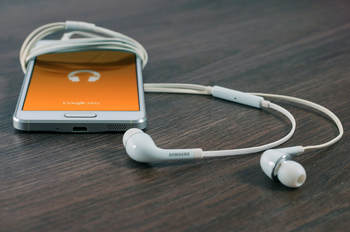 One of the best benefits that technology has given to students is to make music more convenient and readily available. From iPad apps that allow children to create digital tunes on the go to the immeasurable catalog of music available for free on the Internet, modern technology has established a world in which people can explore music from anywhere. In the classroom, this means that teachers can quickly and affordably use the Internet to show students the work of a wide range of musicians throughout history. Students can listen to and be inspired by the work of composers who lived hundreds of years ago, or discover music genres from countries they have never visited. Of course, the Internet is also an excellent resource for finding educational videos and games that help drive home lesson plans without the need for budget increases, which many schools cannot afford. Additionally, the Internet gives students access to websites and tablet apps that enable them to experiment with music composition long before they’ve developed the ability to play a traditional instrument. Some of the best apps that help children learn about composition prior to mastering an instrument include Sound Drop, SoundPrism, inHarmony, Dropophone, and Pattern Music. 4. Technology enhances communication between teachers and parents.Though not directly related to the lessons that take place in a music classroom, one important thing that technology has done for students is establish stronger lines of communication between teachers and parents. Research shows a connection between positive parent-teacher communication and student performance, and modern technology has made it easier for the two parties to communicate through email, classroom web pages or portals, webchat, video conferences, and social networking tools.
Children with parents who are involved in their education typically have better class attendance and behavior at school, and may be more able to see their music homework in a positive light. In addition, parents who have good communication with teachers are more likely to be familiar with the topics that their child is learning in class and can reinforce these lessons at home to bolster the child’s understanding of the material. Singing is a musical hobby that can have an incredible impact on your mental and physical health. Vocalists often benefit from advantages like an improved immune system, better posture, sounder sleep, lower stress levels, and increased mental acuity. Singing can be especially beneficial for those who choose to sing as a member of a group. Joining a choir can be an excellent option if you want to improve your vocal abilities in a social atmosphere. If you’re thinking about joining a choir for the first time, here are six things you’ll need to do in order to prepare for a successful audition that earns you membership into your ideal choral group. 1. Before you begin:Make sure you’re taking care of your voice. Voice care needs to be a priority for all committed singers, so if you’re thinking about joining a choir, you should start by taking simple steps to maintain your vocal health. Small actions that have a big impact on the health of your voice include drinking plenty of water, limiting the amount of alcohol and caffeine that you consume, avoiding cigarettes and spicy foods, and setting up a humidifier in your home. Additionally, make sure to always perform warm up exercises before you start singing in order to stretch out your vocal cords and the muscles surrounding the larynx. Doing so is a key part of protecting your voice from injury. Find a group that suits you. All choirs are different, so make sure that you research and explore the opportunities available in your area before choosing a group to join. There are choirs open to members based on age, as well as groups open to singers based on gender, while others are co-ed and/or all ages. If you have an idea of what kind of music you would like to sing, make that the primary focus of your search. If you’re interested in timeless classical music, consider a choral society or symphony chorus. Singers who are drawn to show tunes and pop-influenced numbers may be well-suited to a show choir. For those who seek a more improvisational, energetic experience, a gospel choir may be the best fit. If you’re unsure of what kind of music you’re most interested in singing, consider attending a range of local choir performances to help you decide. 2. Prior to the audition: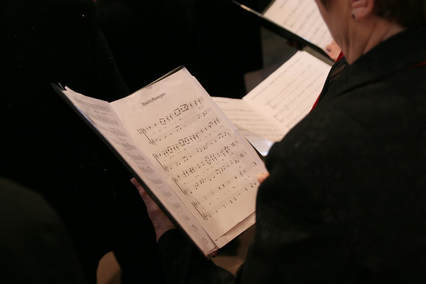 Select the right song to perform. If you choose to join any chorus other than a community choir, you will likely need to audition for a spot in the group. For your audition, you’ll want to prepare a song that highlights the strongest aspects of your voice. For example, if you’re most comfortable using your middle voice as opposed to your chest or head voice, look for songs that allow you to predominantly rely on that aspect of your vocals during the performance. In addition, make sure that your arrangement isn’t too long. It’s better to demonstrate your abilities powerfully and succinctly than to sing too long and risk an audition host asking you to end your performance. Whichever song you choose to sing, make sure you devote plenty of time to practice so you feel well-prepared on the day of your audition. Familiarize yourself with sight reading. Though select choirs still teach songs by rote, many more require members to have a basic ability to read sheet music. In some cases, sight reading will be a required part of the audition process, so make sure you know whether or not it will be expected of you ahead of time. There are many books, websites, and online courses that can help you learn how to sight read. Two resources online are www.sightreadingfactory.com and www.thepracticeroom.net. 3. The day of the audition:Dress correctly for the occasion.
Once you’ve secured an audition with your chosen choir, make sure that you show up on time and in clothing that demonstrates your professionalism. First impressions are important, and showing up in a professional outfit will help put the focus on your singing rather than on your wardrobe. A good rule of thumb is to show up to an audition dressed as you would for a job interview. Don’t let a mistake stop you. During an audition, there are two things that you shouldn’t do. The first thing you need to avoid is apologizing for your performance. Do not enter the audition room with excuses, and don’t verbalize your own critiques of your performance afterward. Telling an audition host that you didn’t give your best performance due to poor warm-up habits or a cold will not bolster his or her opinion of your audition, nor does it project confidence. The second thing you want to avoid is stopping mid-song if you make a mistake. Mistakes are common during auditions because singers are often nervous, no matter how many times they’ve practiced. If you hit a wrong note or forget the words to the song you’re performing, focus on moving forward and recover confidently to show your ability to bounce back from an error. Of all the extracurricular activities that children participate in, music lessons offer kids the ability to hone a unique set of skills and gain useful advantages, including the ability to express themselves creatively, improve their academic skills, learn discipline, and familiarize themselves with other cultures. If you’re considering enrolling your child in music lessons for the first time, read through the answers to the following frequently asked questions that parents often have about children’s music lessons. Q: At what age should my child begin music lessons?A: In general, there is no universally applicable age at which your son or daughter should begin taking music lessons. Readiness for lessons depends largely on a child’s physical size, hand dexterity, attention span, and interest in learning to play music. Each of these factors will vary widely from child to child, and parents must decide whether their son or daughter is prepared to excel in music lessons on a case-by-case basis. Experts suggest that children around the age of five or six can successfully begin to take lessons on instruments like the piano, but even much younger children can enroll in more relaxed general music classes to encourage their interest in the subject as a whole. Q: What is the average cost of music lessons?A: There are many different types of music lessons for parents to choose from, with some coming at a greater expense than others. Rates for private lessons in your local area will vary based on the teacher’s experience, and will likely be much more costly than group lessons. Additionally, some instrument lessons can be taken as part of a school curriculum in band or orchestra class, though even these lessons are likely to cost families around $300 between instrument rentals and other related activity costs. Q: What should I look for in a music teacher? A: If you choose to enroll your child in lessons with a private music teacher, there are certain qualities that all parents should look for in potential instructors. Apart from having a reasonable amount of experience in the subject, a children’s music teacher should be engaging, patient, communicative, and goal-oriented. He or she should have an obvious love for music. In addition, it’s extremely important that he or she also have a teaching style that suits your child’s personality. A child who does not respond well to an instructor’s methods may come to resent the teacher, and ultimately it may negatively affect your child’s interest in music. Q: How long should the average music lesson be? A: The length of the average music lesson will depend on a child’s age, but for most children under 12, half-hour lessons are a good start. Though this estimate is not applicable in all circumstances, 30-minute lessons will help keep your child’s attention span on the task at hand. Young kids can become restless and tune out when lessons stretch beyond the 30-minute mark, though every child is different. Ultimately, the right lesson length will be one in which your child feels engaged and reasonably focused the entire time. In addition, keep in mind that your child should also spend time practicing his or her instrument in addition to attending lessons. Q: How can I help my child as he or she learns to play an instrument?A: There are many simple yet effective ways that you, as a parent, can help you child excel as he or she learns to play. For example, creating a special space in your home for your child’s musical pursuits may help him or her stay focused and avoid distractions when it comes time to practice. Additionally, it can be extremely supportive for parents to show interest in their child’s music—especially if the parent acts more as an audience member rather than a critic. It’s also helpful to ask children open-ended questions so they can demonstrate their knowledge and commit concepts to memory. Q: How long will it take for my child to learn to play an instrument?A: Like so many aspects of learning to play an instrument, the time it takes to reach a reasonable level of proficiency will differ with each child, and there is no straightforward answer. However, the one thing that all children can do to improve their abilities on any given instrument is to practice regularly. Routine, focused practice is the key to developing the skills necessary to play with proficiency, and no child can reach his or her music goals without it. It’s also important to note that children who begin several years of lessons at an older age (like nine) are likely to see significantly more progress in that multi-year period than a child who takes several years of lessons beginning at a younger age. Q: Should I allow my child to change instruments if he or she asks?A: In some cases, you may find that your child begins lessons on one instrument only to tell you that he or she wishes to switch over to another. Experts suggest that allowing your child to switch over to a new instrument is reasonable if the child has dedicated several months of practice to the instrument before deciding to cast it aside. However, make sure that your child is not simply frustrated with his or her inability to play well after very little time. As a general rule, encourage your child to give an instrument several months of practice before he or she decides to try something new.
Although there is a common misconception that only children benefit from learning to play an instrument, research shows that starting music practice later in life can provide many advantages for adults as well. Read on to learn seven reasons why picking up an instrument later in life is an excellent idea for adults over 50. 1. Playing music gives the brain much-needed mental exercise.As we grow older, studies show that the brain becomes less alert, but learning to play an instrument can help strengthen cognitive function and keep the mind sharp. This is due, in part, to the fact that playing a musical instrument requires many different areas of both the left and right sides of the brain to work together at once. Of course, the longer a person has played an instrument, the more positive effects he or she is likely to experience. Still, studies show that seniors who took just six months of lessons on an instrument like the piano showed improvement in skills like planning, verbal fluency, memory, and information processing. 2. You may have more time to dedicate to hobbies.Many people who are over the age of 50 are in a much better position to learn how to play music than they were in their younger years. Older adults may be less busy than people who are still attempting to raise a young family, for instance, and retirees likely have more personal time to focus on hobbies. In addition, older music students may be more financially settled and have the funds to invest in a higher quality instrument and a better music teacher than they would have in the past. 3. You are more aware of what kind of music you enjoy.Older adults learning how to play an instrument for the first time go into the practice with many years of exposure to music, and they tend to be surer of their tastes and preferences. Younger individuals may struggle with which instrument they should learn to play out of uncertainty about what they enjoy, and often vacillate between different instruments while trying to find one that suits them best. Older first-time musicians are less likely to encounter this problem because they have a more well-developed sense of who they are and what they like. Additionally, years of life experience can also bring with it a stronger sense of self-discipline and time management skills, both of which are important when it comes to practicing a new instrument. 4. Playing music can broaden your social life.After the age of 50, many people find themselves feeling isolated as their children have moved away from home, they have gone through a divorce, or their partner has passed on. Learning to play a musical instrument is an excellent way for older adults to meet friends and make new social connections in a fun, organic way, whether through group music lessons or local music meetups. Broadening one’s social life through music can enhance feelings of belonging, provide a sense of purpose, and result in a boost of confidence and self-esteem. 5. Playing music can help you let go of stress.Higher levels of stress often accompany the aging process for a variety of reasons, including illness, major physical changes, and lack of companionship. Learning to play an instrument can be an excellent way for older individuals to relieve stress by triggering a release of the stress-relieving chemical dopamine in the brain. Additionally, playing an instrument provides older musicians with an outlet for creative self-expression, which can elevate their mood and help them work through any emotional difficulties they’re struggling with. 6. Playing an instrument can help you bond with younger generations. An older adult who learns to play an instrument has a hobby that is both easy and enjoyable to share with younger people, like their grandchildren. Music is an incredible unifier that allows people from different generations and with different life experiences to share a common interest. Older adults can use their skills on an instrument and their love of music as a tool to bond with the young people in their lives. 7. Taking lessons on an instrument is easier than ever.Of all the reasons that adults over 50 should consider learning to play an instrument for the first time, perhaps the most basic is that taking music lessons is simpler and more convenient than ever before. While traditional music lessons are still available to those who wish to take them, there are also countless smartphone apps, websites, DVDs, YouTube videos, and books that can help any beginner learn basic skills on the instrument of his or her choice. With all the benefits that music has to offer, and the ease with which a beginner can learn through modern tools, older adults have every reason to take advantage of music lessons.
|
Photo used under Creative Commons from Marina K Caprara
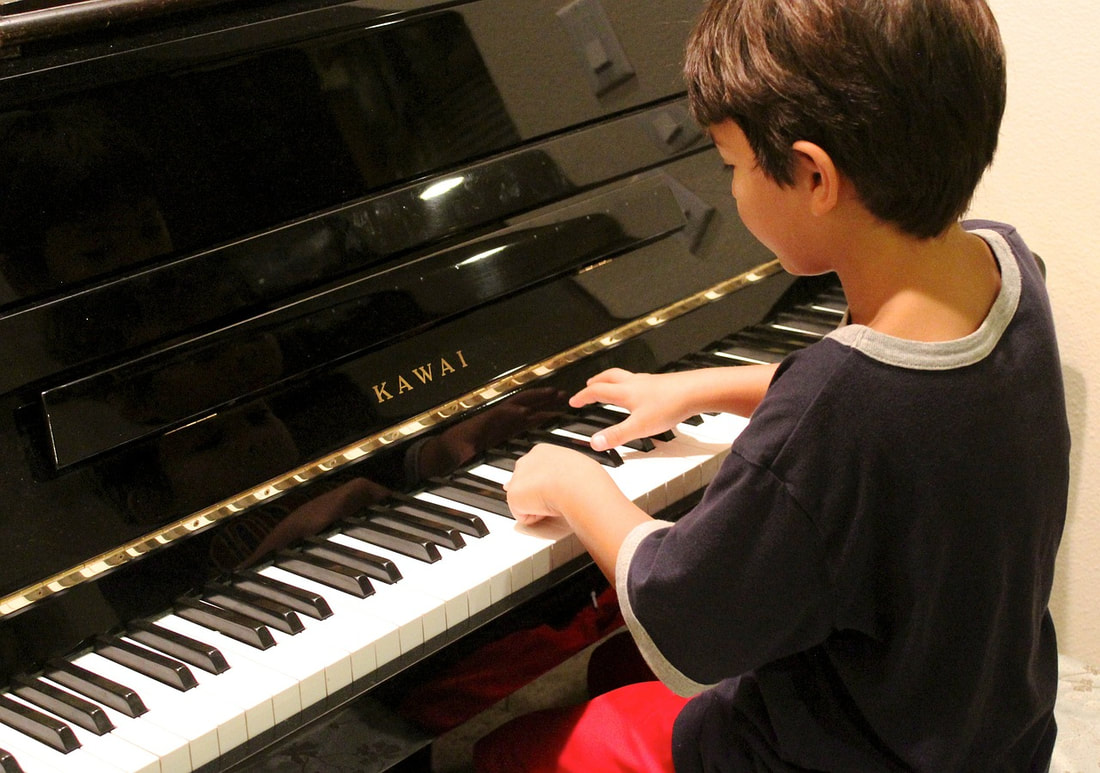
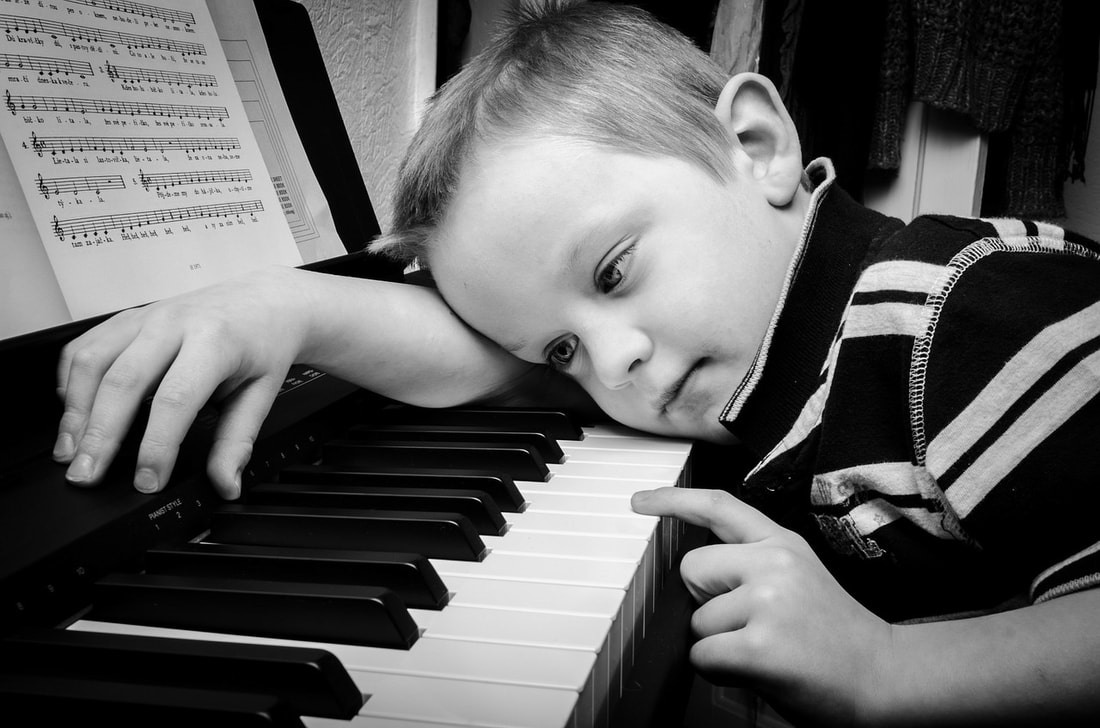



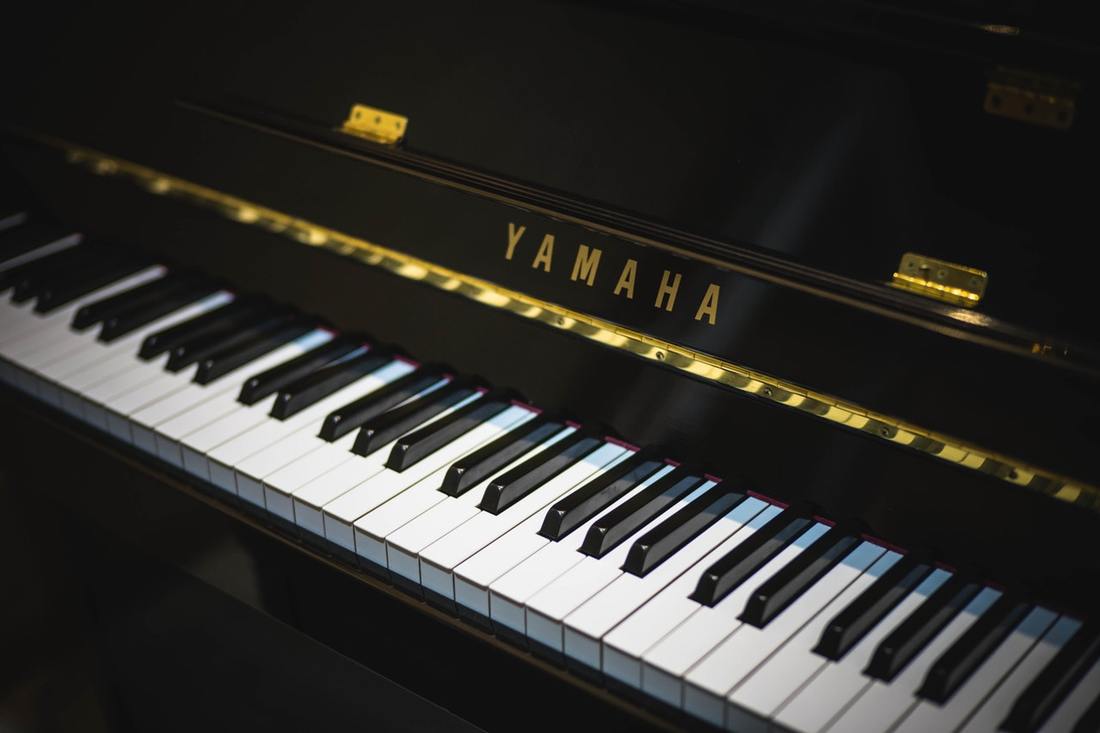
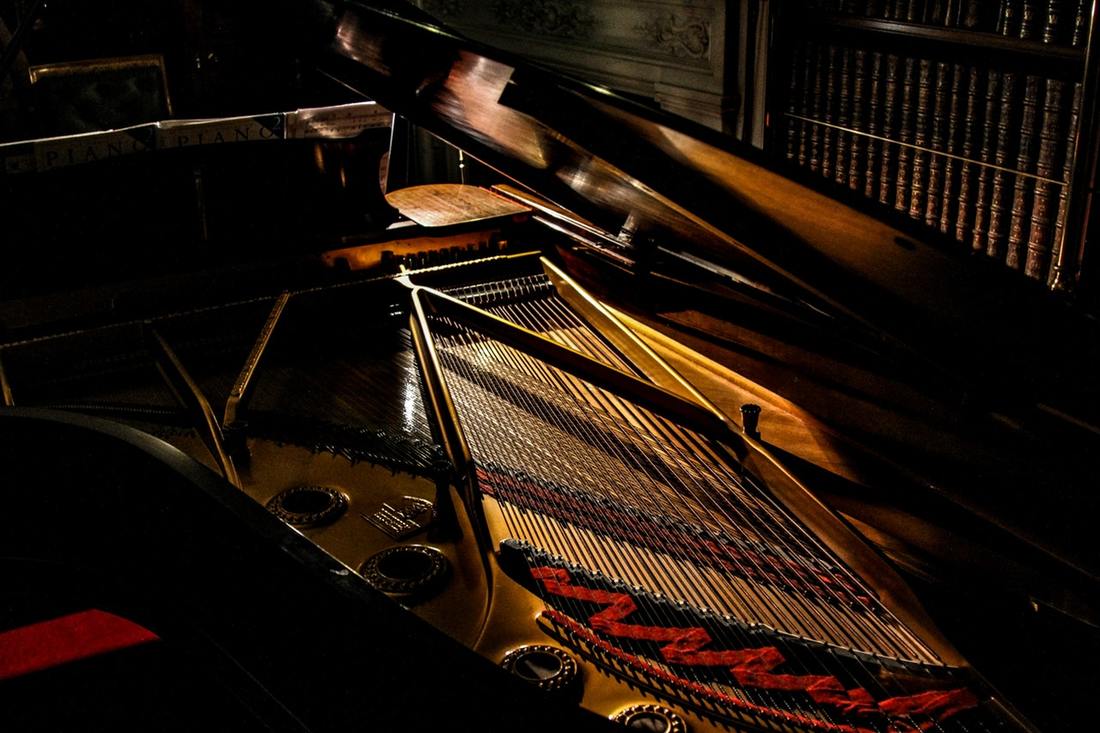
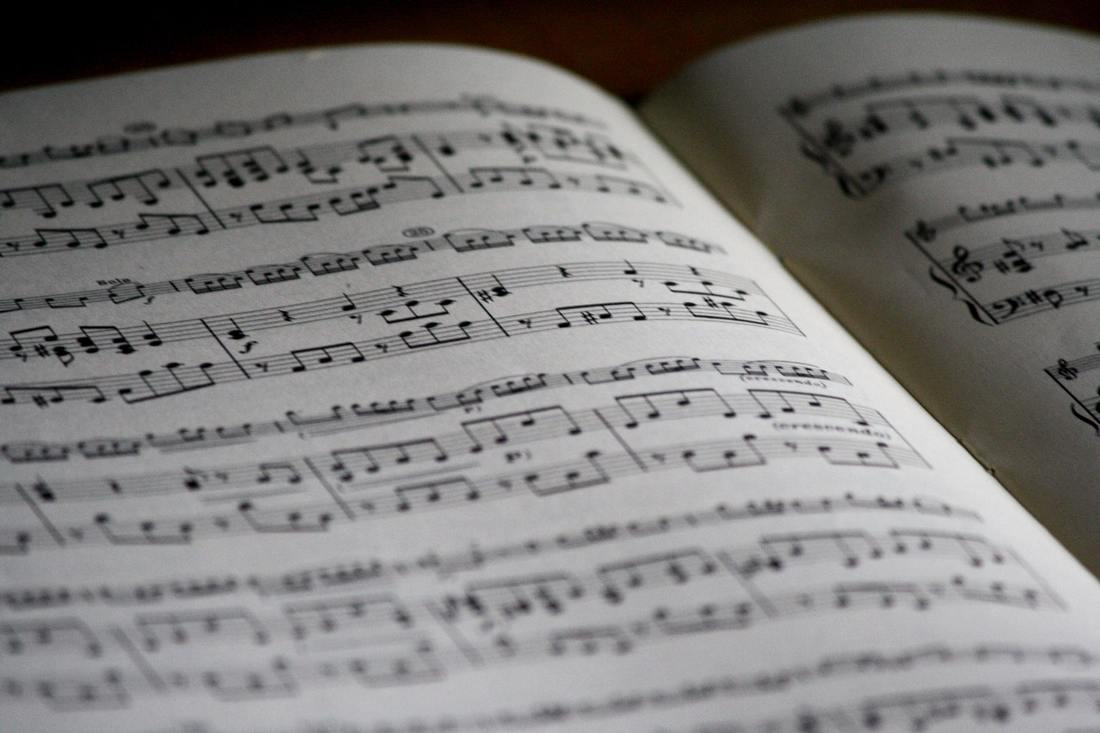
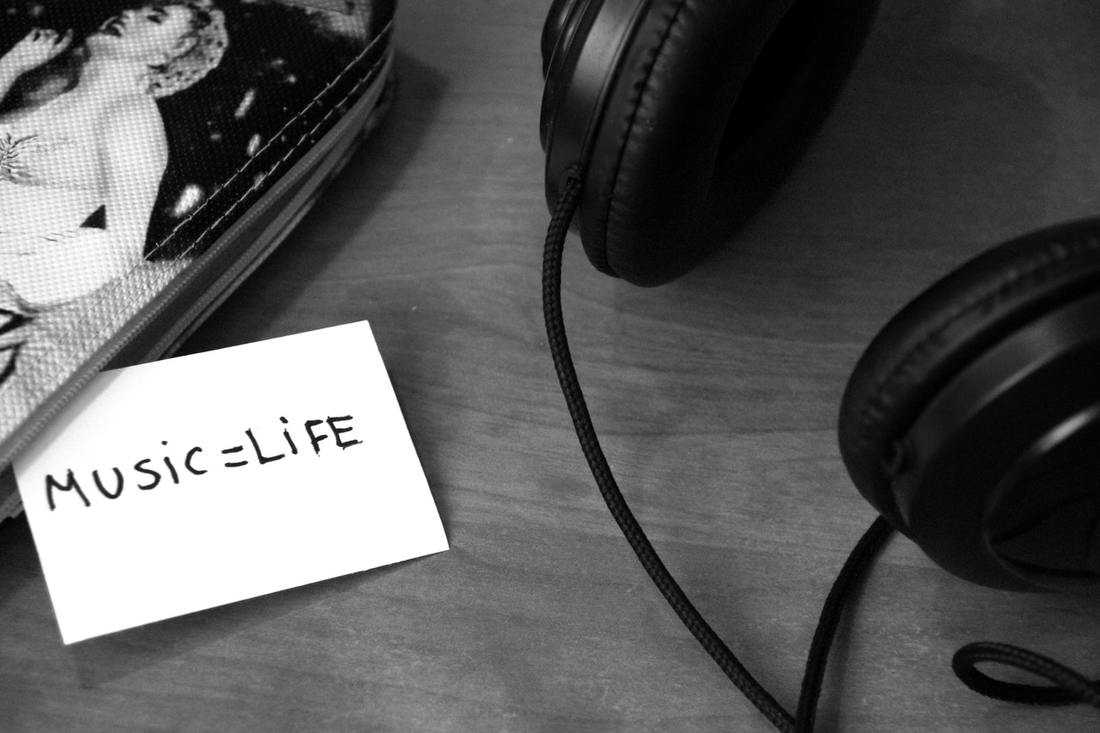
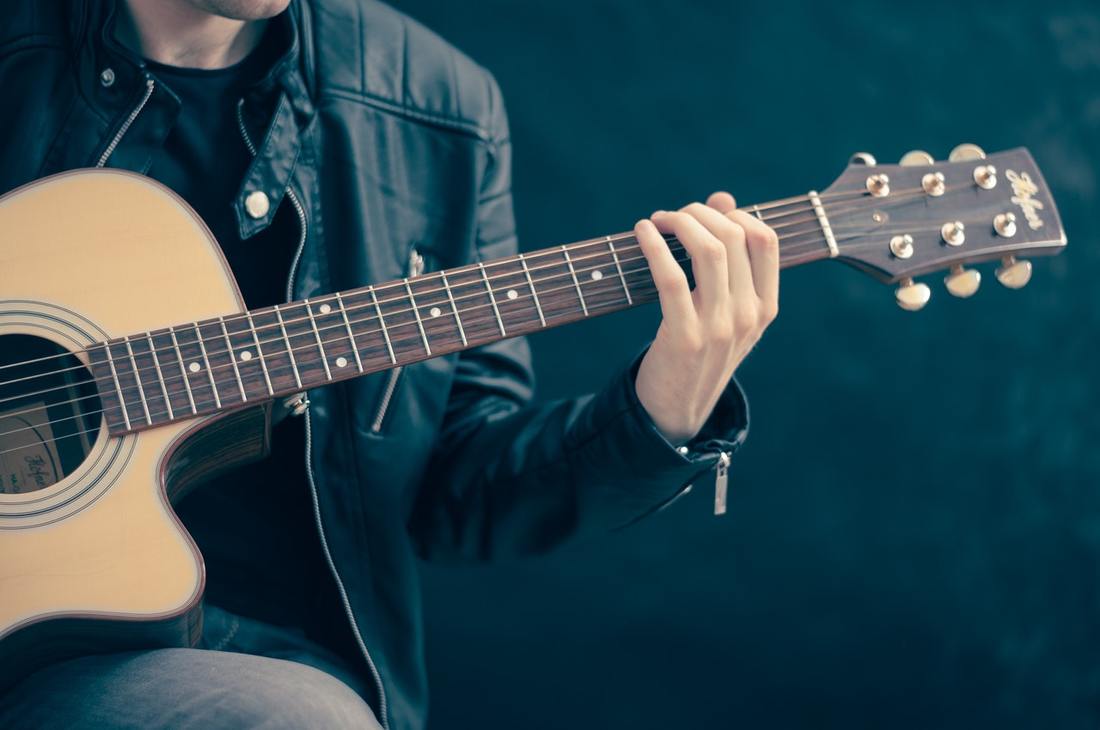
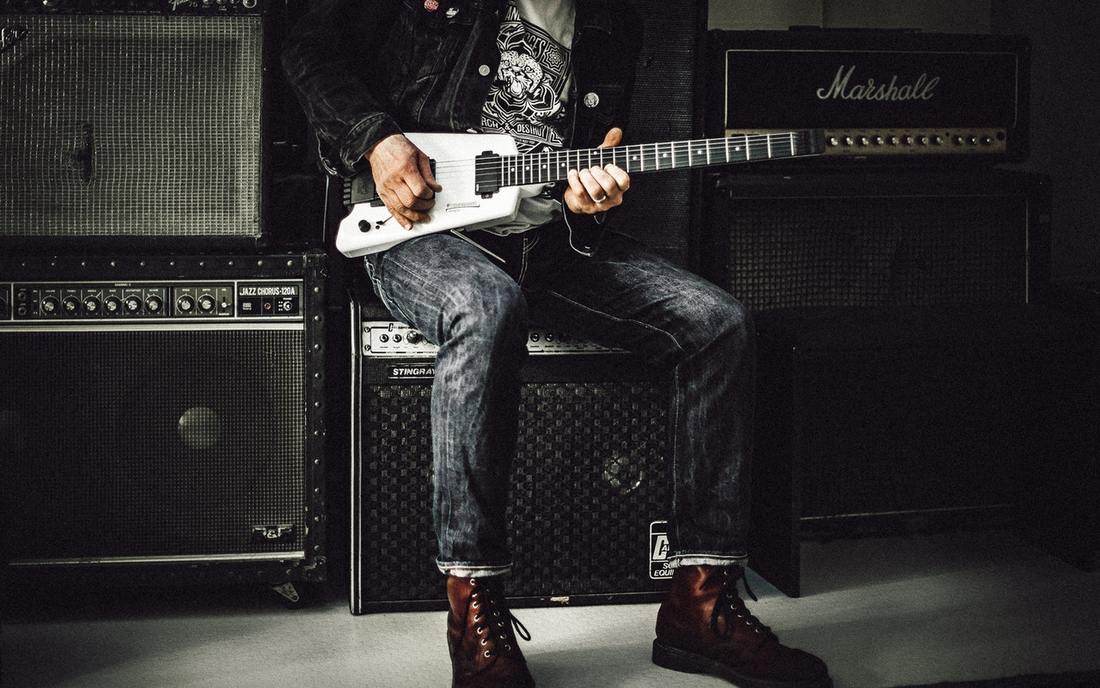

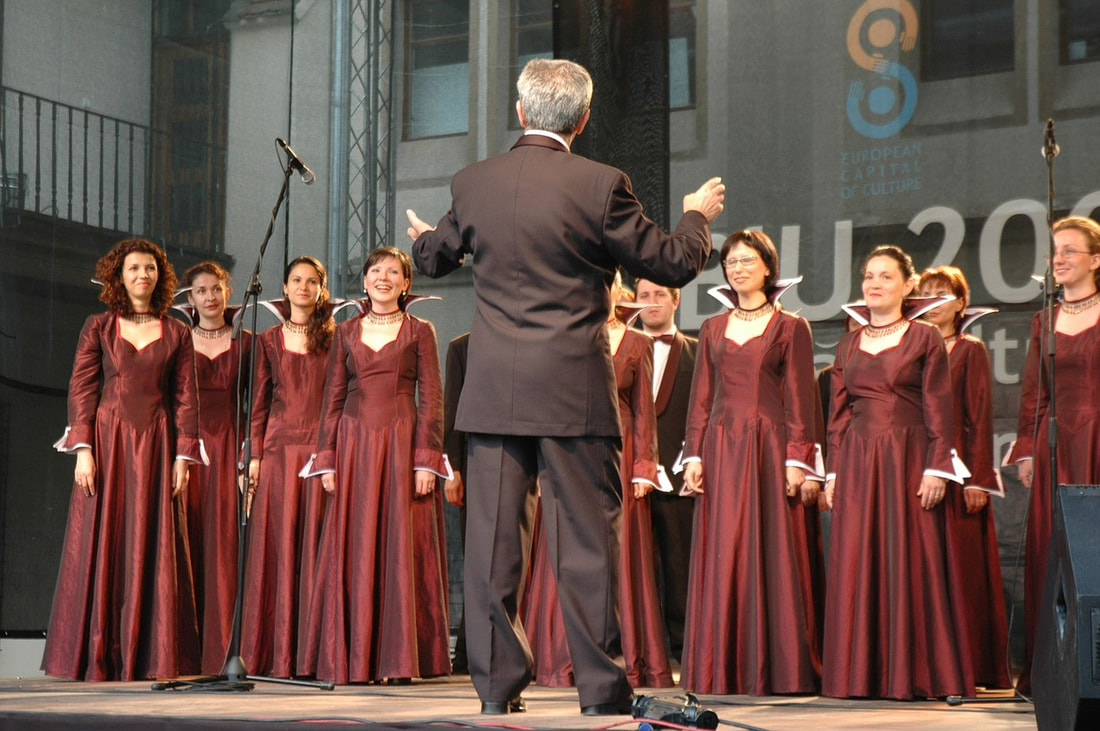

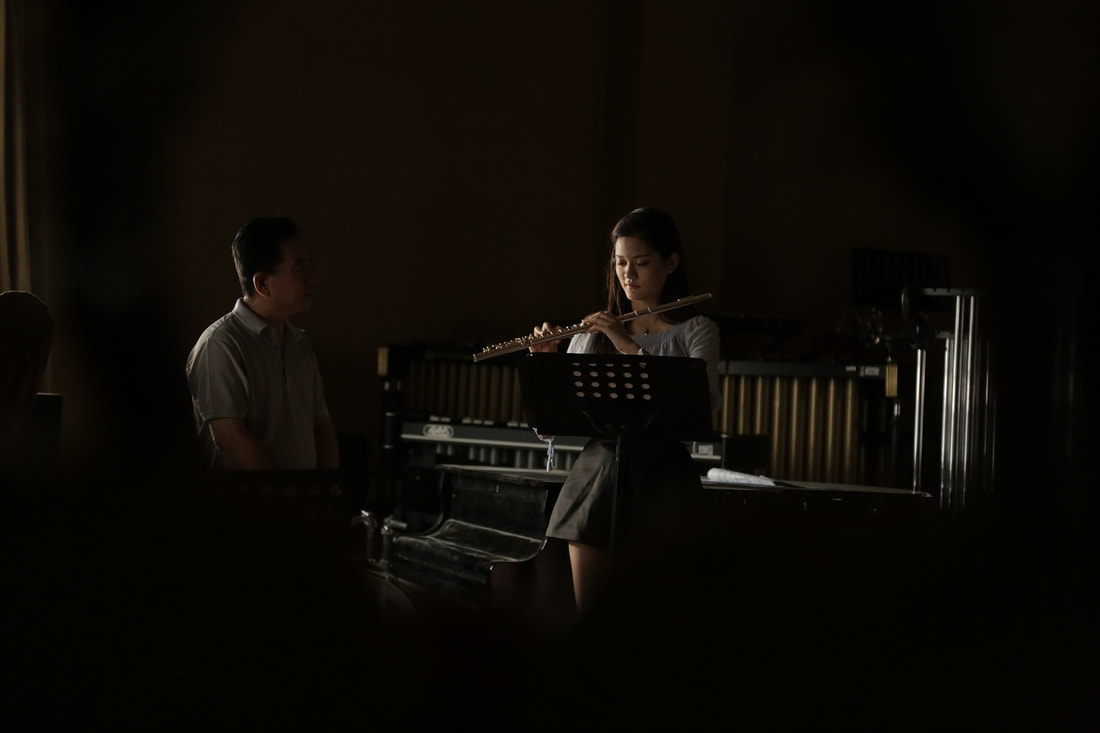

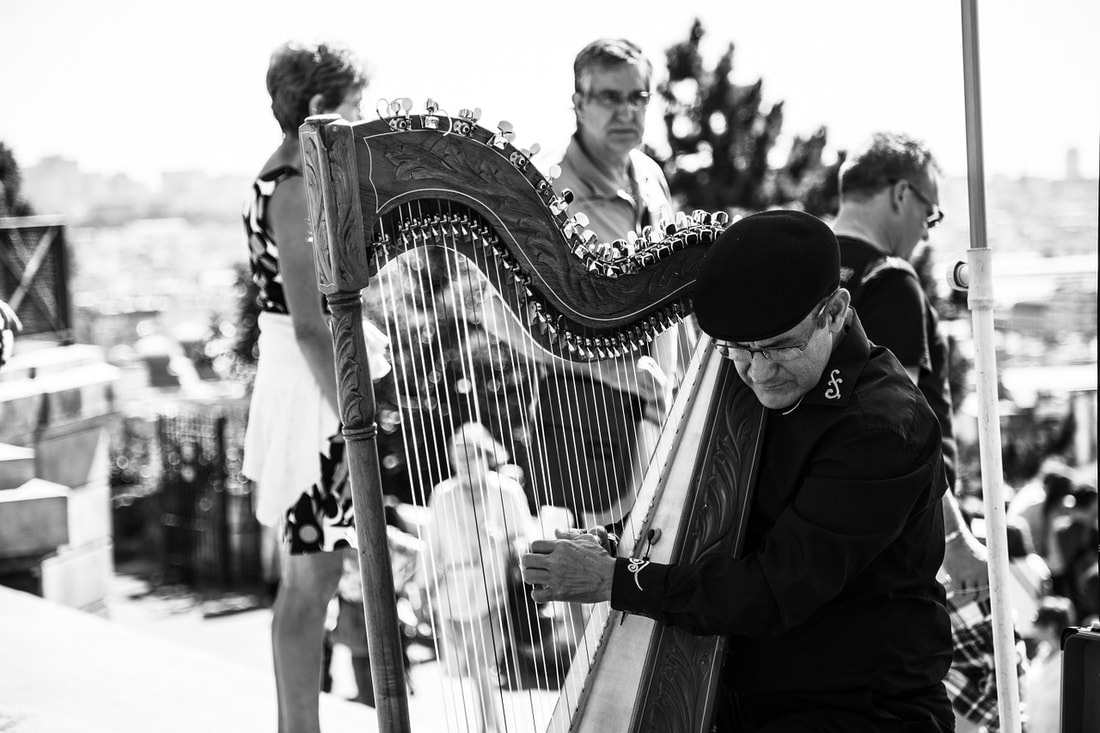

 RSS Feed
RSS Feed
